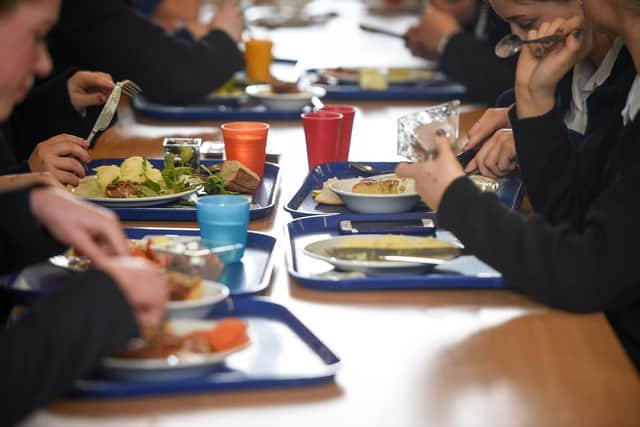How the Government can tackle child poverty across Yorkshire - Professor Kate Pickett
It’s fair to say that, in the last 23 years, lots of things have improved. However, sadly, we can also point to aspects of life in Yorkshire that are worse than they were at the millennium. Shockingly, one of those is child poverty – which is now at its highest in our region since the year 2000, with some areas, such as Bradford, seeing half of children living in poverty.
We could go into all the reasons why child poverty rates are so high in Yorkshire and the wider North of England, compared to the rest of the country, but now is the time to focus on solutions. I’m one of the Academic Co-directors for Health Equity North (HEN) - a virtual institute focused on place-based solutions to public health problems and inequalities – our goal is to reduce the stark inequalities afflicting the North.
Advertisement
Hide AdAdvertisement
Hide AdWe recently asked the Government to consider adopting seven evidence-based missions that would reduce a number of inequalities, both in the short and long term, with clear benefits for the North of England. Whatever changes in Government we may get in 2024, we are asking key leaders, in all parties, to consider the following.


Getting rid of the Universal Credit two-child cap and five-week wait and increasing child benefit. Children should not be financially disadvantaged, and their life chances restricted, based on how many siblings they have. Evidence from the End Child Poverty Coalition shows that, if the two-child cap ended tomorrow, 250,000 children would be immediately lifted out of poverty.
Using existing data to auto-enrol all eligible pupils for free school meals, including all children on Universal Credit. Research from HEN shows that, as of September 2022, one in five households in Yorkshire experience ‘food insecurity’- in other words, not having reliable access to enough affordable, nutritious and healthy food.
Funding schools more fairly – our Child of the North All Party Parliamentary Group recently published a report showing that schools in Yorkshire, on average, receive around £700 per pupil less than schools in London. That means that a school in Yorkshire with 1,500 pupils gets £1m less than a similar sized school in London. Investment in children’s education is absolutely crucial for reducing the inequalities gap – and our children should not miss out on their future based on their postcode.
Advertisement
Hide AdAdvertisement
Hide AdExtending financial support for warm homes to groups most in need, such as low-income households not in receipt of means-tested benefits and those using prepayment meters. Recent data from the English Housing Survey showed that in Yorkshire, one in five homes in the county failed the ‘decent homes criteria’.
Supporting communities and families to access health and social care more easily, focusing funding for family hubs that offer a life-course approach. For example - ensuring valuable Sure Start centres exist in the most deprived communities.
Using a tried-and-tested method to reduce inequalities - similar to that of the 2000–2010 English health inequalities strategy that, in its time, saw a reduction in poverty and infant mortality rates. Whilst those improvements have since been undone, evidence shows that re-implementing this strategy could reduce the inequalities gap by 10 per cent over 10 years.
Using Children’s Rights Impact Assessments – a tool predicting the impact of any proposed law, policy or budgetary allocation - to make sure children and young people’s needs are being met. This way, we will know in real terms how key decisions affect the most vulnerable in our communities.
Advertisement
Hide AdAdvertisement
Hide AdWherever you are on the political spectrum, I believe that we should all be concerned about children living in poverty. Poverty is about so much more than how much money you have in your bank account. It is about your options, access to basic standards of living, and missing out on fulfilling aspects of life that, even when affordable to most, are not an option to those in poverty.
It is a vicious cycle - people’s lack of money contributes to poor health and circumstances, which impedes their ability to access money. The cycle tends to continue across generations as children’s life chances are hampered by poverty - but it doesn’t have to be that way.
These missions are just seven of the many that policymakers could implement to make a real-world difference. From an economics perspective, it makes absolutely no sense to leave people living in poverty - in fact it is highly counter-productive.
The well documented long-term effects of poverty over the life-span put an enormous dent in the economy. Short-term solutions are not good enough.
Professor Kate Pickett is professor of epidemiology at University of York and HEN academic co-director.
Comment Guidelines
National World encourages reader discussion on our stories. User feedback, insights and back-and-forth exchanges add a rich layer of context to reporting. Please review our Community Guidelines before commenting.